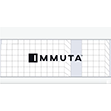

(CKA/Shutterstock)
Nvidia is showing signs that it wants to be the Google of the next-generation 3D Internet, which is being projected as an upgrade from the current 2D Internet.
The company has developed a contextual search engine for three-dimensional (3D) data called DeepSearch, which it could bring to the public Internet in the future. The search engine is targeted at 3D data, which could be images, graphical assets, and other contextual data.
DeepSearch is an “AI powered, modern and scalable way of searching the vast amounts of 3D data that was previously dark for many enterprises and people around the world in their catalogs,” said Rev Lebaredian, vice president of Omniverse and simulation technology at Nvidia, in a call with media.
Nvidia is emerging as a major player to create the 3D version of the Internet, which is widely referred to as the metaverse. The metaverse is seen as a virtual universe where avatars can work, play, and interact. Games like Minecraft and Fortnite, and virtual reality platforms like Roblox, are seen as early instantiations of the metaverse.
“We’ve built the core technology that allows us to search 3D data which was previously unsearchable. You can use natural language text to search. You can use images to search for things that are similar inside the 3D catalog,” Lebaredian told Datanami.
Facebook is betting its future on the metaverse as its once-hot 2D-based social media assets lose ground to platforms like Tiktok. Microsoft is buying gaming company Activision Blizzard for $68.7 billion to grow in the metaverse business.
Nvidia is sharing more information about DeepSearch at the SIGGRAPH conference this week in Vancouver, Canada, where it announced availability of the software to its customers.
“Over time, we’ll be making this technology available publicly as well through various other services. That’s to be decided. What we’re showing and announcing here is the core technology. How it ends up reaching everyone, that’s going to evolve over time,” Lebaredian said.
DeepSearch will initially be available for its Omniverse customers to install on premises within enterprises without exposing it to the public at large, Lebaredian said. Omniverse is an overarching brand used by the company to group its 3D software offerings.
Nvidia last year described DeepSearch as a search engine for a 3D asset library that can be searched via text or by dragging or dropping an image. That feature makes it easier for game developers to search for 3D graphics that it can drag and drop in environments.
The DeepSearch spider uses AI technology to scour through tags of 3D models, and automatically adds contextual tags by searching through the entire content associated with 3D models. The system uses deep learning to classify, index and retrieve objects in 3D models.
The idea of a search engine for the metaverse isn’t new. Ludo focuses on Web3 concepts such as NFTs and cryptocurrency, which are considered foundations for e-commerce in the metaverse. Canadian firm Lighthouse Labs is creating a metaverse search engine to “discover places, friends, experiences and events across the spatial web,” the company said on its website.
Nvidia’s search engine enriches discovery by digging deeper to extract context out of assets in the 3D world.
Nvidia is using SIGGRAPH as a launchpad for many metaverse offerings. The metaverse is changing the way Nvidia thinks about graphics creation and distribution, and is inserting a healthy dose of AI to make graphics delivery faster and more efficient.
Related Items:
Nvidia CEO Touts a ‘Million X’ Speedup in AI
Nvidia Launches Hopper H100 GPU, New DGXs and Grace Megachips
July 2, 2025
- Bright Data Launches AI Suite to Power Real-Time Web Access for Autonomous Agents
- Gartner Finds 45% of Organizations with High AI Maturity Sustain AI Projects for at Least 3 Years
- UF Highlights Role of Academic Data in Overcoming AI’s Looming Data Shortage
July 1, 2025
- Nexdata Presents Real-World Scalable AI Training Data Solutions at CVPR 2025
- IBM and DBmaestro Expand Partnership to Deliver Enterprise-Grade Database DevOps and Observability
- John Snow Labs Debuts Martlet.ai to Advance Compliance and Efficiency in HCC Coding
- HighByte Releases Industrial MCP Server for Agentic AI
- Qlik Releases Trust Score for AI in Qlik Talend Cloud
- Dresner Advisory Publishes 2025 Wisdom of Crowds Enterprise Performance Management Market Study
- Precisely Accelerates Location-Aware AI with Model Context Protocol
- MongoDB Announces Commitment to Achieve FedRAMP High and Impact Level 5 Authorizations
June 30, 2025
- Campfire Raises $35 Million Series A Led by Accel to Build the Next-Generation AI-Driven ERP
- Intel Xeon 6 Slashes Power Consumption for Nokia Core Network Customers
- Equal Opportunity Ventures Leads Investment in Manta AI to Redefine the Future of Data Science
- Tracer Protect for ChatGPT to Combat Rising Enterprise Brand Threats from AI Chatbots
June 27, 2025
- EarthDaily Ignites a New Era in Earth Observation with Landmark Satellite Launch
- Domo Deepens Collaboration with Snowflake to Accelerate AI-Driven Analytics and Data Integration on the AI Data Cloud
- AIwire Launches Annual People to Watch Program
June 26, 2025
- Inside the Chargeback System That Made Harvard’s Storage Sustainable
- What Are Reasoning Models and Why You Should Care
- Databricks Takes Top Spot in Gartner DSML Platform Report
- Snowflake Widens Analytics and AI Reach at Summit 25
- Why Snowflake Bought Crunchy Data
- LinkedIn Introduces Northguard, Its Replacement for Kafka
- Change to Apache Iceberg Could Streamline Queries, Open Data
- Fine-Tuning LLM Performance: How Knowledge Graphs Can Help Avoid Missteps
- Agentic AI Orchestration Layer Should be Independent, Dataiku CEO Says
- Top-Down or Bottom-Up Data Model Design: Which is Best?
- More Features…
- Mathematica Helps Crack Zodiac Killer’s Code
- AI Agents To Drive Scientific Discovery Within a Year, Altman Predicts
- ‘The Relational Model Always Wins,’ RelationalAI CEO Says
- Confluent Says ‘Au Revoir’ to Zookeeper with Launch of Confluent Platform 8.0
- Solidigm Celebrates World’s Largest SSD with ‘122 Day’
- DuckLake Makes a Splash in the Lakehouse Stack – But Can It Break Through?
- The Top Five Data Labeling Firms According to Everest Group
- Supabase’s $200M Raise Signals Big Ambitions
- Data Prep Still Dominates Data Scientists’ Time, Survey Finds
- With $17M in Funding, DataBahn Pushes AI Agents to Reinvent the Enterprise Data Pipeline
- More News In Brief…
- Astronomer Unveils New Capabilities in Astro to Streamline Enterprise Data Orchestration
- Databricks Unveils Databricks One: A New Way to Bring AI to Every Corner of the Business
- BigID Reports Majority of Enterprises Lack AI Risk Visibility in 2025
- Snowflake Openflow Unlocks Full Data Interoperability, Accelerating Data Movement for AI Innovation
- Astronomer Introduces Astro Observe to Provide Unified Full-Stack Data Orchestration and Observability
- Seagate Unveils IronWolf Pro 24TB Hard Drive for SMBs and Enterprises
- BigBear.ai And Palantir Announce Strategic Partnership
- Gartner Predicts 40% of Generative AI Solutions Will Be Multimodal By 2027
- Databricks Donates Declarative Pipelines to Apache Spark Open Source Project
- Code.org, in Partnership with Amazon, Launches New AI Curriculum for Grades 8-12
- More This Just In…



























